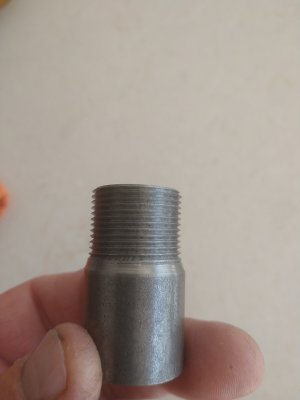While not an absolute necessity, many people feed the cutter straight in, most use a 30 (+/-) degree feed to keep the working face of the cutter working on one side. There are several considerations for threading, not the least being to never stop rotation with the cutter engaged. Usually a groove cut at the nominal depth of the threads as a place to allow the spindle to "run down" after the pass. This is particularly important if you use carbide tooling, the tip breaks easily.
Keep in mind, for my purposes, the depth of cut is 0.002-0.005 thou. More
might be appropriate for larger threads, I cut small screws. 1/4-20 to me is large. I do cut larger threads, but it's rare. Much of my work is in the range of 2-56. A final finish pass to clean things up when you have the proper size. A good learning tool is to cut to a nut or a die to get a feel for the last couple of passes.
There are many people more appropriate than me to answer questions on threading. It is a subject as complex as the lathe itself. One thing I have found, again my
personal perspective, is that 130 RPM is the high end of speed for threading. That's why I built a 3:1 reduction gear long years ago. Larger machines have a system of back gears to this end, the smaller machines have other methods for keeping speeds down. A very common version from years back was to use the hand rotation. The ultimate to me was a small steering wheel bolted to the spindle pulley. That allowed threading even medium hard steel at a controlled pace. My recommendation for hand rotation was for more than plastics. I became part of that discussion around the time I built the reduction gear so I never pursued the idea.
Once you have the machine working to (more or less) your satisfaction, it would probably generate more responses by starting another thread asking for input on threading. There are many different subjects about a lathe, literally the "queen of the shop". A good starting point for the novice is at
. Quinn has many videos on the various shop subjects. She starts here, with links to further expand your knowledge. I follow (loosly) her web site still. There are many details where I feel a need for other approaches than my own.
.

